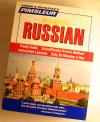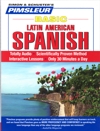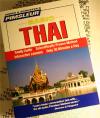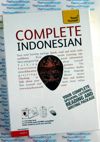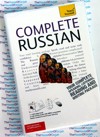Pimsleur Basic Croatian - 5 Audio CDs - Discount - Learn to speak croatian
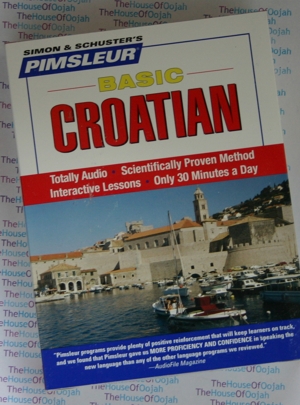
Pimsleur Basic Croatian5 Audio CDs |
 |
Pimsleur Basic Croatian - 5 Audio CDsBrand New (still in original packaging wrapped) 5 CDs The Pimsleur Method provides the most effective language-learning program ever developed. The Pimsleur Method gives you quick command of Croatian structure without tedious drills. Learning to speak Croatian can actually be enjoyable and rewarding. The key reason most people struggle with new languages is that they aren't given proper instruction, only bits and pieces of a language. Other language programs sell only pieces — dictionaries; grammar books and instructions; lists of hundreds or thousands of words and definitions; audios containing useless drills. They leave it to you to assemble these pieces as you try to speak. Pimsleur enables you to spend your time learning to speak the language rather than just studying its parts. When you were learning English, could you speak before you knew how to conjugate verbs? Of course you could. That same learning process is what Pimsleur replicates. Pimsleur presents the whole language as one integrated piece so you can succeed. With Pimsleur you get:
Millions of people have used Pimsleur to gain real conversational skills in new languages quickly and easily, wherever and whenever — without textbooks, written exercises, or drills About the Croatian LanguageCroatian language (Croatian: hrvatski jezik) is a South Slavic language which is used primarily in Croatia, by Croats in Bosnia and Herzegovina, in neighbouring countries where Croats are autochthonous communities, and parts of the Croatian diaspora. It is sometimes classified as belonging to the Central South Slavic diasystem (also referred to as "Serbo-Croatian").
Standard Croatian is dialectally based on the Western Ã���Ã�¯Ã�¿Ã�½Ã��Ã�¯Ã��Ã�¿Ã��Ã�½Ã���Ã�¯Ã�¿Ã�½Ã���Ã��Ã�¯Ã���Ã�¯Ã�¿Ã�½Ã��Ã�¯Ã��Ã�¿Ã��Ã�½Ã���Ã�¯Ã�¿Ã�½Ã���Ã��Ã�¿Ã���Ã�¯Ã�¿Ã�½Ã��Ã�¯Ã��Ã�¿Ã��Ã�½Ã���Ã�¯Ã�¿Ã�½Ã���Ã��Ã�½tokavian dialect with Ijekavian reflex of Common Slavic yat vowel. Croatian linguistic area encompasses two other major dialects, Čakavian and Kajkavian, which contribute lexically to the standard language. It is written with the Croatian alphabet, based on Latin alphabet.
The modern Croatian standard language is a continuous outgrowth of more than nine hundred years of literature written in a mixture of Croatian Church Slavonic and the vernacular language. Croatian Church Slavonic was abandoned by the mid-15th century, and Croatian as embodied in a purely vernacular literature (Croatian literature) has existed for more than five centuries. The first purely vernacular texts in Hrvatski (Croatian) are distinctly different from Church Slavonic dated back to the 13th century. In the 14th and 15th centuries the modern Croatian language emerged. (It appears in texts as Vatican Croatian prayer book from 1400.) The morphology, phonology and syntax) only slightly differ from contemporary Croatian (standard language).
The standardization of Croatian language can be traced back to the first Croatian dictionary (Faust Vrančić: Dictionarium quinque nobilissimarum Europae linguarumÃ���Ã�¯Ã�¿Ã�½Ã��Ã�¯Ã��Ã�¿Ã��Ã�½Ã���Ã�¯Ã�¿Ã�½Ã���Ã��Ã�¯Ã���Ã�¯Ã�¿Ã�½Ã��Ã�¯Ã��Ã�¿Ã��Ã�½Ã���Ã�¯Ã�¿Ã�½Ã���Ã��Ã�¿Ã���Ã�¯Ã�¿Ã�½Ã��Ã�¯Ã��Ã�¿Ã��Ã�½Ã���Ã�¯Ã�¿Ã�½Ã���Ã��Ã�½Latinae, Italicae, Germanicae, Dalmatiae et Ungaricae, Venice 1595) and first Croatian grammar (Bartul KaÃ���Ã�¯Ã�¿Ã�½Ã��Ã�¯Ã��Ã�¿Ã��Ã�½Ã���Ã�¯Ã�¿Ã�½Ã���Ã��Ã�¯Ã���Ã�¯Ã�¿Ã�½Ã��Ã�¯Ã��Ã�¿Ã��Ã�½Ã���Ã�¯Ã�¿Ã�½Ã���Ã��Ã�¿Ã���Ã�¯Ã�¿Ã�½Ã��Ã�¯Ã��Ã�¿Ã��Ã�½Ã���Ã�¯Ã�¿Ã�½Ã���Ã��Ã�½ić: Institutionum linguae illyricae libri duo, Rome 1604).
The language of Jesuit KaÃ���Ã�¯Ã�¿Ã�½Ã��Ã�¯Ã��Ã�¿Ã��Ã�½Ã���Ã�¯Ã�¿Ã�½Ã���Ã��Ã�¯Ã���Ã�¯Ã�¿Ã�½Ã��Ã�¯Ã��Ã�¿Ã��Ã�½Ã���Ã�¯Ã�¿Ã�½Ã���Ã��Ã�¿Ã���Ã�¯Ã�¿Ã�½Ã��Ã�¯Ã��Ã�¿Ã��Ã�½Ã���Ã�¯Ã�¿Ã�½Ã���Ã��Ã�½ić's translation of the Bible (Old and New Testament, 1622Ã���Ã�¯Ã�¿Ã�½Ã��Ã�¯Ã��Ã�¿Ã��Ã�½Ã���Ã�¯Ã�¿Ã�½Ã���Ã��Ã�¯Ã���Ã�¯Ã�¿Ã�½Ã��Ã�¯Ã��Ã�¿Ã��Ã�½Ã���Ã�¯Ã�¿Ã�½Ã���Ã��Ã�¿Ã���Ã�¯Ã�¿Ã�½Ã��Ã�¯Ã��Ã�¿Ã��Ã�½Ã���Ã�¯Ã�¿Ã�½Ã���Ã��Ã�½1636; unpublished until 2000) in the Croatian Ã���Ã�¯Ã�¿Ã�½Ã��Ã�¯Ã��Ã�¿Ã��Ã�½Ã���Ã�¯Ã�¿Ã�½Ã���Ã��Ã�¯Ã���Ã�¯Ã�¿Ã�½Ã��Ã�¯Ã��Ã�¿Ã��Ã�½Ã���Ã�¯Ã�¿Ã�½Ã���Ã��Ã�¿Ã���Ã�¯Ã�¿Ã�½Ã��Ã�¯Ã��Ã�¿Ã��Ã�½Ã���Ã�¯Ã�¿Ã�½Ã���Ã��Ã�½tokavian-ijekavian dialect (the ornate style of the Dubrovnik Renaissance literature) is as close to the contemporary standard Croatian language (problems of orthography apart) as are French of Montaigne's "Essays" or King James Bible English to their respective successorsÃ���Ã�¯Ã�¿Ã�½Ã��Ã�¯Ã��Ã�¿Ã��Ã�½Ã���Ã�¯Ã�¿Ã�½Ã���Ã��Ã�¯Ã���Ã�¯Ã�¿Ã�½Ã��Ã�¯Ã��Ã�¿Ã��Ã�½Ã���Ã�¯Ã�¿Ã�½Ã���Ã��Ã�¿Ã���Ã�¯Ã�¿Ã�½Ã��Ã�¯Ã��Ã�¿Ã��Ã�½Ã���Ã�¯Ã�¿Ã�½Ã���Ã��Ã�½modern standard languages. |
Pimsleur Basic Croatian - 5 Audio CDs |
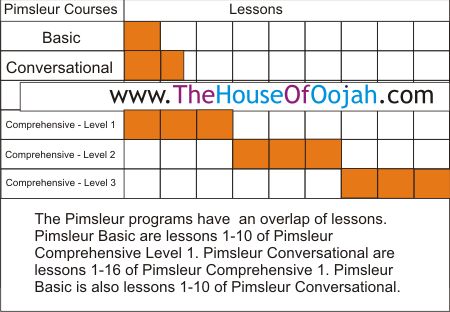

 0 Items (Empty)
0 Items (Empty)
